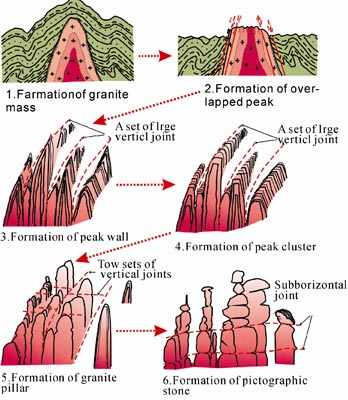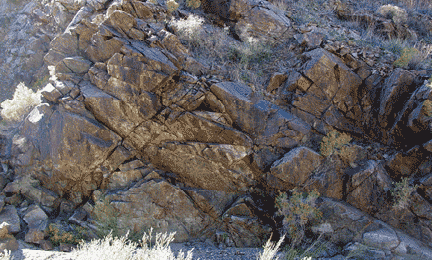A dike is an intrusion into an opening cross cutting fissure shouldering aside other pre existing layers or bodies of rock.
Why do granite landforms vary in form and scale.
The nature of the materials from which granitic rocks have evolved.
The morphology of granite exposures.
Thickness can vary from the sub centimeter scale to many meters and the lateral dimensions can extend over many kilometers.
Includes ruware bornhardts blocky inselbergs and castle koppies.
How does granite form.
It is an example of an intrusive igneous rock magma cooled under the earth s crust and the granite was exposed millions of years later by erosion of the softer rocks around it to create some unique landscapes.
Granite landforms granite is a hard crystalline rock which is made up of three minerals.
Granite landforms provides a systematic coherent and comprehensive account and analysis of granite landforms.
Large slabs of granite are found in areas where earth s crust is deeply eroded.
Whereas erosion shapes landforms their origins lie in tectonic processes that build the major structures of the earth.
The nature of the materials from which granitic rocks have evolved.
Steep sided isolated hills that rise abruptly above the surrounding plains and show much variety in scale and morphology.
The latter give rise to spectacular landscapes and include classic inventories of granite landforms such as domes inselbergs tors and minor features of selective weathering maia and nascimento.
Extrusive and intrusive landforms are both formed as a result of tectonics and vulcanicity in one way or another how there is a difference between them.
And the weathering processes near the earth s surface.
Explain how and why extrusive volcanic landforms vary in form and scale.
Granite landforms provides a systematic coherent and comprehensive account and analysis of granite landforms.
Granite must slowly cool in deep locations in order to produce the large grains you see throughout.
The word tectonic is derived from the greek word tekton which means.
The formation of granite is sparked by lava eruptions but the lava must contain the same composition as granite rhyolite which is only.
It examines granite forms and their genesis.
The morphology of granite exposures.
Molten rock that reaches the surface to form.
Quartz feldspar and mica.
Granite is an intrusive igneous rock which means it was formed in place during the cooling of molten rock generally the slower the molten rock cooled the larger it s mineral crystals with k feldspar megacrysts forming in special circumstances greater than 5cm.
Formed by etchplanation theory.
Very durable landforms as they comprise of unjointed rock cores and are virtually indestructable.
It examines granite forms and their genesis.
And the weathering processes near the earth s surface.









